दलितों के खिलाफ़ गाय
एक राजनीतिक हथियार के रूप में
by गुरिंदर आज़ाद
गुरिंदर आज़ाद
समसामयिक मुद्दों पर साक्षात्कार और डॉक्यूमेंट्रीज की आंबेडकर युग श्रृंखला में, गुरिंदर आज़ाद राउंड टेबल इंडिया के लिए अरविंद शेष और रजनीश कुमार का इंटरव्यू लेते हैं. दोनों पेशे से पत्रकार और सामाजिक चिन्तक हैं. वे पूरे मुद्दे को विभिन्न आयामों से विश्लेषित करते हैं.
गुरिंदर आज़ाद द्वारा लिया गया यह इंटरव्यू 13 अगस्त 2016 को Youtube पर और Round Table India प्रकाशित हुआ था,
गुजरात के दलितों ने चार युवा दलितों पर हुए अत्याचार का अपने ख़ुद के सशक्त तरीके से जवाब देकर एक उदाहरण सेट किया है. उन युवा दलितों पर बर्बरता केवल इसलिए हुई क्योंकि वे मृत गाय को ढो रहे थे. उन्होंने अपने ‘ पारंपरिक’ काम को ब्राह्मणवादी व्यवस्था के विरोध में एक विद्रोह के रूप में छोड़ दिया. अहमदाबाद से ऊना तक एक रैली का आयोजन किया गया जहां यह शर्मनाक घटना हुई. हालांकि, इस पूरे प्रकरण के अन्य पहलू भी हैं जिन्हें दलित-बहुजन लोकेशन से भी समझने की आवश्यकता है.
गुरिंदर आज़ाद - अरविंद जी राउंड टेबल इंडिया के कार्यक्रम अम्बेडकर ऐज में आपका स्वागत है, रजनीश जी आपका भी स्वागत है. रजनीश जी मौजूदा भारत में गाय प्रकरण में जो भी मामला है, सबके सामने है. हम ऐसे बहुत रोमांचक दौर में हैं जहां गाय के लिए हलचल है, गाय पर हलचल है! गाय को केंद्र में रखकर जो राजनीति बुनी गयी है, आप इस पर क्या कहते हैं?
रजनीश कुमार - बिलकुल ठीक कहा आपने हम भारतीय राजनीति के बहुत ही रोमांचक दौर में हैं जहां गाय पर और गाय के लिए हलचल है! ये बिलकुल उसी तरह का मामला है जैसे हम तीन लोग यहाँ पर जमा हैं और उसमें से आपको चिन्हित कर लिया जाए एक प्रतिष्ठित व्यक्ति के तौर पर और बाकी हम दोनों को तवज्जो ना दी जाए. आपके लिए तमाम सुख-सुविधाएं और आपके साथ जो व्यवहार हो, वो एक विशेष व्यवहार हो, ये जो इस तरह की मनोवृत्ति है, उसका एक एक्सटेंशन चल रहा है, हो रहा है. जैसे आम बोल-चाल में आप पाएंगे, आपने गौर किया होगा कि खास सरनेम वाले लोग, उन्हें जब आपको बुलाना होता है, ऑटोमेटिकली आपके मुंह से सम्मान-सूचक शब्द निकलता है.. जी! उन लोगों के नाम के साथ जुड़ कर आता है. लेकिन आप देखेंगे, मैं आपको एक उदाहरण देता हूं बिहार से - बिहार में बहुत सारे मुख्यमंत्री हुए उनको हम सब उनके नाम के साथ जी से, बोलचाल में जी के साथ संबोधन करते रहे लेकिन जब लालू यादव चीफ मिनिस्टर हुए तब आम बोल-चाल की भाषा में ललुआ शब्द का प्रचलन हुआ. तो ये जो मनोवृत्ति है, इसका एक्सटेंशन राजनीति में हो रहा है और जैसे हमारे दैनिक जीवन में बहुत सारे जानवर हैं, गाय है तो भैंस भी है, घोड़ा भी है, गधा भी है लेकिन गाय को एक पवित्र जानवर के तौर पर चिन्हित करना और उसको स्थापित करना, ये और कुछ नहीं एक सामंती मनोवृत्ति का प्रतिफलन है राजनीति में और उसकी वजह भी है. ये आपने देखा होगा 1990 के बाद से कहते हैं दलित-पिछड़ों का उभार, राजनीति में जो बहुत तेजी से उभार हुआ, बहुत ज़ोरदार तरीके से हुआ. उसने भारतीय राजनीति को पूरी तरह से मथ दिया, बदलके रख दिया. जाहिर है उसके पहले, 1990 के पहले जो सत्ता में थे, सामाजिक सत्ता में और राजनीतिक सत्ता में जो हावी थे, उनके लिए ये बिलकुल प्रतिकूल परिस्थिति जैसा है तो 1990 के बाद राजनीति में सामाजिक न्याय का विचार जो उभरा, उसको एक दूसरे विचार से दबाने की कोशिश जो हो रही है, उसके टूल के तौर पर ये गाय का मामला भारतीय राजनीति में आया है.
गुरिंदर आज़ाद – अरविंद जी आपसे जानना चाहूंगा कि आपका क्या मत है इसके ऊपर, इस मुद्दे पर?
अरविंद शेष - गाय हमारी माता है..
गुरिंदर आज़ाद – ये तो हम बचपन में सुनते आये हैं कि गाय हमारी माता है, हम लोग एक लेख लिखते थे इसके ऊपर.
अरविंद शेष - मैं वहीँ से इसके ऊपर आना चाहता हूं. रजनीश जी ने बहुत अच्छा ध्यान दिलाया की ये 90 के बाद, मंडल वन के बाद जो दलित-पिछड़ी चेतना का उभार है, उसके काउंटर के लिय भी गाय को रखा गया है. लेकिन मैं वहां से आना चाहता हूं जब स्कूल में ये आपसी बातचीत का हिस्सा था, ये मजाक का ही विषय रहा होगा, पता नहीं कभी हुआ हो या नहीं हुआ हो लेकिन ये था कि किसी विद्यार्थी ने अपनी कॉपी में जानकारी के अभाव में लिख दिया की गाय हमारी माता है. परीक्षा की कॉपी में लिख दिया ‘गाय हमारी माता है, हमको कुछ नहीं आता है.’ तो इसका काउंटर इस रूप में आया की फिर टीचर ने उसी को नंबर देने के लिए लिखा की ‘बैल हमारा बाप है, नंबर देना पाप है.’ मेरा ये कहना है कि तब ये बातें बिलकुल सहज भाव में कही जाती थीं, सहज भाव में सुनी जाती थीं और इस पर कहीं कोई आतंक का माहौल नहीं बनता था, कहीं किसी की हत्या नहीं होती थी, कहीं किसी की पिटाई नहीं होती थी. आज की तारीख में ऐसे उदाहरण अब हमारे सामने आम हैं कि उत्तरप्रदेश के, या हरियाणा के या राजस्थान के किसी सुनसान सड़क पर एक गाड़ी जा रही है, उसमें कुछ अचानक से गोरक्षक, मैं उन्हें गोरक्षक गुंडे कहता हूं, प्रकट होते हैं और उस गाड़ी को रोकते हैं, गाड़ी में गाय, बैल, या भैंस कुछ भी होता है, उसके पाए जाने पर वो अचानक से चिल्लाना शुरू कर देते हैं गाय हमारी माता है, ड्राईवर, खलासी जो भी होता है, जो ले जा रहे होते हैं, उन्हें उतारते हैं, बहुत बर्बरता से उनकी पिटाई करते हैं और थोड़ा विरोध करने पर या किसी और वजह से उनको मारके पेड़ पर भी लटका देते हैं तो अगर उस समय वो गोरक्षक गुंडे जब चिल्ला रहे होते हैं गाय हमारी माता है तो जो पीड़ित उस समय हो रहे हैं तो उस समय क्या वो किसी हालत में ये सोच भी सकते हैं कि अगर गाय तुम्हारी माता है तो बैल तुम्हारा बाप है. अगर ऐसा कभी हो तो शायद वो किन्हीं स्थितियों में जिंदा छोड़ दिए जाते हैं लेकिन ये कहने के बाद शायद उनको जिंदा भी जला दिया जाएगा. ऐसा हो ही रहा है! तो स्कूल में जब हम पढ़ते थे, बहुत छोटे थे तो उस समय से ये बात चली आ रही थी की ‘गाय हमारी माता है, हमको कुछ नहीं आता है, बैल हमारा बाप है, नंबर देना पाप है’. आज की स्थिति देख लीजिए गाय हमारी माता है, के खिलाफ़ आप अगर सोचते भी हैं, अगर ये नहीं भी सोचते हैं तब भी आपके साथ क्या हो सकता है! ये अंदाज़ा आप लगा सकते हैं.
लातेहर में, झारखण्ड के लातेहर में एक 12 साल का बच्चा और एक 35 साल का युवक जो जानवर लेके जा रहा था, गाय थी, भैंस थी, उनको पकड़कर बकायदा मारा गया, पीटा गया और फांसी जैसा बनाके पेड़ पर लटका दिया गया. इसके अलावा आम-तौर पर ऐसी घटनाएं हो रही हैं, हिमांचल के जंगलों में खदेड़ –खदेड़ के मारा गया. ऐसी तमाम घटनाएं हैं. लेकिन ये घटना आज नहीं शुरू हुई है, ये घटना तब से चली आ रही है, तक़रीबन 12-13 साल पहले की बात है झज्झर के कुलीना गांव में 5 दलित गाय का चमड़ा, मरी हुई गाय का चमड़ा उतार रहे थे, वहां से गुजरते हिंदू परिषद् बजरंगदलियों की भीड़ ने पत्थरों से मार-मारके मार डाला. तब उस समय विश्व हिंदू परिषद् के आचार्य गिरिराज किशोर ने कहा था की 5 दलितों की जान की कीमत एक गाय से कम है मतलब गाय की जान महत्वपूर्ण है. तो जिस दर्शन में ही जिसके विचार में ही ये बात दर्ज है और ये खुले-आम बाकायदा उसके नेता सार्वजनिक रूप से बिना किसी शर्म के, बिना किसी भय के ये घोषणा करते हुए कहते हैं कि 5 दलितों की जान की कीमत एक गाय से कम महत्वपूर्ण है. उस दर्शन से आप उम्मीद क्या करेंगे? वहां से चलते हुए यहाँ तक आप देख लीजिए. लेकिन हां ये ठीक है कि वो उस समय दुलीना में हुआ था लेकिन वो एक प्रवृत्ति का हिस्सा नहीं है, वो अब एक राजनीति का हिस्सा है, मतलब ये सब बाकायदा मुखर राजनीति का हिस्सा हो चुका है. था तो वो भी राजनीति ही, धर्म एक राजनीति है, धर्म की आड़ में एक गाय के रूप में आप दलितों और मुसलमानों की हत्या करते हैं लेकिन आज वो ठोस शक्ल में राजनीति के रूप में सामने है. चारों तरफ़ से ऐसा लग रहा है जैसे कि इधर जाएंगे गाय लेकर, उधर जाएंगे गाय लेकर, वहां से मार दिए जा सकते हैं.
गाय के मांस पर आप बात नहीं कर सकते हैं. अगर आपके घर में, घर के फ्रिज में कोई बकरे का मांस रखा है तो कोई भीड़ आएगी दादरी में और पूरे घर पर हमला कर दिया जाएगा और मारते-मारते मार डाला जायेगा. ठीक है कि ये गाय का मांस खा रहा है. अब ये कानून क्या है, कानून नहीं है इससे उनको कोई मतलब नहीं है. फंसे ये कहां, गुजरात के ऊना में जब सार्वजनिक रूप से चार दलितों को इन लोगों ने गाय का चमड़ा उतारने के आरोप में सार्वजनिक रूप से पिटाई की. संयोग बस यही है कि उसका एक विडियो वायरल हो गया, बहुत सारे लोगों के सामने आया, इस पर आपत्तियां जाहिर हुईं, आपत्तियां सामने आयीं. इसके बाद इसने बहुत ही उग्र आंदोलन के रूप में सत्ता को बताना शुरू किया की गाय अगर आपका हथियार है तो बचना भी मेरा अधिकार है. इसका सामना करना भी मेरा अधिकार है.
गुरिंदर आज़ाद – अरविंद जी आपने बहुत महत्वपूर्ण बात कही. मैं आपके पास लौटता हूं. रजनीश जी चलिए उनकी बात मान लेते हैं कि गाय के साथ उनका कोई पवित्र रिश्ता है लेकिन यहां तो मरी गाय की खाल उतारने की बात है फिर भी दलितों के साथ मार-पीट ! अख़लाक़ के फ्रिज में रखे मांस के टुकड़े को परखने की कोई ज़रुरत नहीं समझी कि वो बीफ़ है या कुछ और है और गुंडई की भीड़ में उन्हें मार डाला. दो-तीन दिन पहले दो मुस्लिम महिलाओं पर हमला हुआ जबकि उनके साथ भैंसे का गोश्त था. मेरा प्रश्न ये है कि संविधान-कानून के होते हुए इनका ख़ुद जज बनना, फ़रमान देना, मार डालना किसी को भी पकड़ के, ये ताकत आती कहां से है?
रजनीश कुमार – एक तो दलित-पिछड़ा उभार भारतीय राजनीति में 1990 के बाद जो आया था, उसने भारतीय समाज, राजनीति को बुरी तरह से मथ दिया था, बदल दिया था. वो सामाजिक-राजनीतिक सत्ताधारियों के मुफ़ीद नहीं था, लगातार इस बात की कोशिश हो रही थी की इस उभार को कैसे वापस पुनः मुसिको भवः वाली स्टाइल में वापिस उसी दशा में पहुंचा दिया जाए. तो जब इस तरह की मानसिकता से लोग चलेंगे तो उसमें संविधान और कायदे-कानून का पालन होगा, ऐसी अपेक्षा रखना अपने आप के साथ ज्यादती है. निश्चित तौर पर नहीं होगा. आप देखें कि इस देश में अम्बेडकर के नाम पर अम्बेडकर की राजनीति का विरोध करने वाले अम्बेडकर की फोटो पर माला तो पहनाते हैं लेकिन अम्बेडकर के विचारों का एक अंश भी अपनी राजनीति में समावेश नहीं करते हैं. तो कायदे-कानून की तो बात दूर है हालात यहां ये हैं कि आज इंडियन एक्सप्रेस सुबह जब मैं पलट रहा था तो एक ख़बर देखी कि एक ट्रक ड्राईवर जो गेहूं लादकर लेकर जा रहा था, गलती से सड़क पर घूमती तीन गायों से उसके ट्रक की टक्कर हो गयी, उसके बाद वो ड्राईवर इतना डर गया कि उसे लगा अब कहीं से भी लोग आयेंगे और मुझे मार डालेंगे. वो नदी में कूद गया और नदी में कूदने के बाद अभी तक उसका कोई अता-पता नहीं है तो कहने का मतलब ये जो माहौल है ये अजीबोगरीब माहौल है.
गुरिंदर आज़ाद - अरविंद जी राजस्थान की ही गोशालाओं में पानी नहीं है, कुछ नहीं है, खाने के लिए नहीं है, वो तो इतनी नेचुरल डेथ भी नहीं मर रही हैं. वो एक तरह से भूख से मर रही हैं. ऐसे में वही गोरक्षक जो इनका दम भरते हैं, वो कहते हैं इनको मार रहे हैं दूसरी तरफ उन्हीं के संरक्षण में गायें हैं जो मर रही हैं , एक तरह से वो भी हत्या है. ये क्या है?
अरविंद शेष- असल में मेरा साफ़–साफ़ मानना है कि गोरक्षकों का या गाय के नाम पर सुरक्षा के लिए चलाने वाले आंदोलनों का मकसद गाय की सुरक्षा करना है ही नहीं. जो लोग इसके केंद्र में हैं, उनको बहुत अच्छे से पता है कि गाय किसी भैंस, या कुत्ते या सुअर या बकरे जैसा ही कोई जानवर है. गाय उनके लिए राजनीति है और राजनीति का मसला ही वहीँ आकर टिक जाता है कि वो अपनी सुविधा के हिसाब से इस्तेमाल करेंगे. वो जिंदा गाय को ढोती हुई किसी गाड़ी को पकड़ेंगे, उसके ड्राईवर या खलासी, उसमें सवार तमाम लोगों को मारेंगे, मार डालेंगे दूसरी तरफ किसी मरी हुई गाय का खाल उतारते हुए दलितों को मारना-पीटना शुरू कर देंगे या मार डालेंगे तो तीसरी तरफ़ उन्हीं की अपनी पार्टी के राज्य में 500 गायें मर जाएंगी भूख से या एक तरह से कहिये की उनकी गाय माताएं यातना से मर जाएंगी, उन पर कोई कार्यवाही नहीं होगी, उनके बारे में कोई पूछने तक नहीं जायेगा कि क्यों मर गयीं इतनी गायें. तमाम बूचड़खानों में से जिनमें से ज्यादातर के मालिक या मालिकान जो हैं वो हिंदू हैं जैन हैं या पारसी हैं, उनके बारे में कोई पूछ-ताछ नहीं होगी.
गुरिंदर आज़ाद - संगीत सोम ?
अरविदं शेष - हां संगीत सोम उनकी अपनी रिश्तेदारी है मतलब ये सारे लोगों को पता है कि वो भाजपा के विधायक हैं और वो कैसे वहां के बूचड़खाने के मालिकाने में हिस्सा रखते हैं, उनके खिलाफ़ कहीं कोई कैंपेन नहीं चलेगा. तो दरअसल ये गाय का रक्षण कोई मसला है ही नहीं इनके लिए. गाय की एक पॉलिटिक्स इनके लिए है. रजनीश जी ने ठीक कहा कि ये खास तरह के आंदोलन, एक खास तरह के विचारे के पैदा होने का ये काउंटर है लेकिन अब सवाल ये है कि वो काउंटर कहां तक जायेगा, कितने लोगों की जान लेगा किस तरह की परिस्थितियों को रचेगा ? वो आबोहवा किसने बनायी? ठीक है सड़क पर सुनसान इलाके में किसी गाड़ी को रोककर वो गुंडे जो हैं लोगों को मारना-पीटना शुरू कर देते हैं, उनको हौसला कहां से मिलता है, कहां से मिलता है? अब ये पूछना चाहिए. कल प्रधानमंत्री ने कहा सड़क पर जो लोग गाय की रक्षा में लगे हुए हैं उनमें से 80 प्रतिशत लोग या ज्यादातर जो हैं उनके गोरखधंधे हैं अपने, उसमें लगे रहते हैं, गौरक्षा से उनका कोई मतलब नहीं है. लेकिन वो सड़क पर घूमने वाले गाय के नाम पर लोगों को मारने-पीटने वाले लोग हैं वो कहां से खुराक पा रहे हैं. खुद 2014 के चुनाव में प्रधानमंत्री मोदी ने गाय को लेकर जिस तरह की संवेदनशीलता प्रकट की थी, कुछ सरकारी मंत्रालयों ने गाय को लेकर जो अपना लगाव पैदा किया है, आधिकारिक रूप से आरएसएस ने गौरक्षण योजना की जो मांग की है, ये सब बातें कहां से आ रही हैं? ये गाय का ही रक्षण हमारे लिए ज़रूरी क्यों है?
गुरिंदर आज़ाद – गाय का रक्षण दूसरी बात ये भी है कि भारत जो है बीफ़ एक्सपोर्ट में सेकंड नंबर पर है.
अरविंद शेष - एक तरफ तो आप बीफ़ एक्सपोर्ट में पहले नंबर पर बनने में लगे हुए हैं दूसरी तरफ गाय का मांस खाने के लिए मना करते हैं तीसरी तरफ अगर कुछ दलित मरी गाय का चमड़ा उतारते हैं तो उनको आप मारना-पीटना, उनके खिलाफ बर्बर अत्याचार करना शुरू कर देते हैं. ये किस तरह की पॉलिटिक्स है? ये इन्सान विरोधी पॉलिटिक्स है और प्रधानमंत्री खड़े होकर वहां बोल रहे हैं कि ये गोरक्षक सेवक से ज्यादा गुंडे हैं या उनका गोरखधंधा है लेकिन इसी में वो एक और पॉलिटिक्स खेल देते हैं. वो जनता को ये बताते हैं कि पुराने ज़माने में हिंदू राजा मुसलमान राजाओं से या दूसरे किसी धर्म के राजाओं से इसलिए हार जाते थे क्योंकि वो जो दूसरे राजा होते थे वे अपनी सेना के आगे गायों को रखते थे. मुझे नहीं मालूम किस मिथक तक में इतिहास की बात तो छोड़ दीजिए किसी मिथक तक में यह बात दर्ज है या नहीं है. मुझे इस बात की जानकारी चाहिए. अगर किसी मित्र को जानकारी हो तो बताएं मुझे की किस लड़ाई में किस राजा ने सेना के आगे गाय की लाइनें खड़ी कर दी थी और किस हिंदू राजा ने उन गायों को मानकर कोई वार नहीं किया और हार गये. तो यहां एक तरफ प्रधानमंत्री जनता को बताते हैं कि ये गोरक्षकों का गोरखधंधा है और दूसरी तरफ उसी अगली लाइन में ये बोल जाते हैं कि एक राजा जो है दूसरे राजा से जीतने के लिए गाय का इस्तेमाल करता था. तो किस तरह की पॉलिटिक्स है ये ?
ये जनता को क्या बेवकूफ बनाने वाला मामला है या उनकी हत्या कराने वाला? जहां तक कानून का सवाल है, मेरा तो मानना है कि ठीक है कई राज्यों में कानून बने हुए हैं कि यहाँ गाय की हत्या ना हो, गाय की हत्या नहीं की जाएगी, गाय का मांस नहीं खाया जाएगा. सवाल ये है कि केवल गाय ही क्यों ? गाय और भैंस में अगर तुलना करते हैं तो हर लिहाज़ से भैंस जो है गाय के मुकाबले कहीं उपयोगी साबित होती है फिर भैंस के लिए कोई कानून क्यों नहीं? गाय ही क्यों उस कानून का संरक्षण प्राप्त करे !
गुरिंदर आज़ाद – रजनीश जी अगर तथ्यों के बिना नरेंद्र मोदी जी यह कहते हैं कि वो जो राजा का उदाहरण देते हैं कि एक राजा दूसरे राजा को हराने के लिए गाय का इस्तेमाल कर रहा है. क्या ये कन्फ्यूजन के लिए है क्या वो जनता को कंफ्यूज करना चाहते हैं? क्योंकि मेरी समझ में तो मैंने ऐसा कुछ पढ़ा नहीं है. मैंने ठीक-ठाक ही वेदों को पढ़ा है.
रजनीश कुमार- बहुत अच्छा सवाल किया है आपने. मैं बार-बार कह रहा हूं कि 1990 के बाद की जो राजनीति है उसको काउंटर करने के लिए कई तरह की तकनीक, कई तरह के तरीके अपनाए जा रहे हैं जिसमें सबसे अहम तरीका जो अभी चल रहा है जिसे अरविंद जी हमेशा कहते हैं पॉलिटिक्स ऑफ़ कनफ्यूज़न. ये पॉलिटिक्स ऑफ़ कन्फ्यूज़न का जो तरीका है ये बिलकुल दिखाई दे रहा है, बिलकुल कंफ्यूज करने का, एक तरफ तो आपका जो जनप्रतिनिधि है वो बर्बर घटना से दुःखी भी दीखता है और दूसरी तरफ ठीक अगले सेकेण्ड उसी राजनीतिक घटना का इस्तेमाल करता है तो इस तरह के कंफ्यूजन, जो सामाजिक सत्ताधारी हैं उनके सामने कोई कंफ्यूजन नहीं है, राजनीतिक सत्ताधारी, सामाजिक सत्ताधारी के सामने कोई कंफ्यूजन नहीं है. उनके लक्ष्य बहुत क्लियर हैं, कंफ्यूजन का मामला वहां आता है जहां वंचित जमात के लोग हैं जिनमें शिक्षा, जागृति की कमी है, ये कंफ्यूजन की पॉलिटिक्स उनके लिए है. उनको भ्रमित करके आप डिसपर्स कर देंगे तो उनकी ताकत अपने आप कम हो जाएगी तो ये उभार जो उभरा था वो अपने आप कमजोर पड़ जाएगा. आप देखिए दुनिया में सबसे ज्यादा दूध उत्पादन करने वाला देश है डेनमार्क. उस डेनमार्क में आज तक मैंने डेनमार्क के बारे में जितना भी पढ़ा-जाना वहां कभी नहीं, मेरे ज़ेहन में तो ये बात याददाश्त में भी नहीं आ रही है कि डेनमार्क के लोग गाय को माता के रूप में मानकर कोई मुहीम चलाते हैं. सवाल ये है कि हम क्या करें ? बात इस पर होनी है और सोचने का विषय ये होना है. जैसे ऊना के लोगों ने दर्शाया है. उन्होंने कहा की जिस काम से, जिस प्रोफेशन से जिस रोज़गार से ज़िल्लत मिलती हो, उसको हम क्यों करें ! तो राजनीति का ये प्रस्थान बिंदु बन सकता है और ये प्रस्थान बिंदु बन गया तो यकीन जानिए की भारतीय राजनीतिक-सामाजिक स्थिति है वो इस कदर बदल जाएगी की एक दूसरी तस्वीर सबके सामने पेश होगी.
गुरिंदर आज़ाद – अरविंद जी ऊना की इस बात को कैसे देखा जाये. उनका जो रिस्पांस था कि मरी हुई गाय को कलेक्टर के यहाँ रखना और वो भी परिसर के अन्दर और ढेर लगा देना, ठीक है एक बात है और दूसरी बात ये है कि गुजरात में हर जगह पर जो गाय मरी हुई हैं, उनको कोई उठाने नहीं आ रहा है, कोई गाय-प्रेमी, कोई गाय-रक्षक भी उठाने नहीं आ रहा है, माता है ! ऐसा व्यवहार! ये जो दोनों बातें हैं, आपका क्या कहना है और मैं पहले मुद्दे पे आना चाहूंगा वो जो ऊना का रिस्पांस है वो क्या कहता है?
अरविदं शेष – एक्चुली मैं तो ऊना के उस दलित प्रतिरोध का कितना भी शुक्रिया करूँ वो शायद कम हो. पिछले दो साल से गाय को इन लोगों ने यानी की आरएसएस के खेमे के तमाम लोगों और समूहों ने जिस तरह का हथियार बनाया हुआ था उसमें तो सबसे मज़ेदार स्थिति यही है कि हम किसी भी समस्या के विश्लेषण और उसका कोई जवाब ढूंढने के लिए आम तौर पर बुद्धिजीवी तबके पर निर्भर रहते हैं, उनसे उम्मीद करते रहते हैं. लेकिन पिछले दो साल में कहीं से ऐसा कोई जवाब आया हो मुझे नहीं पता. एक तरह से वो सब स्तब्ध बैठे थे कि करें तो क्या करें लेकिन ऊना की इस छोटी घटना ने, जहां दलितों ने ये फैसला किया, ऊना के उस वायरल हुए विडियो यानी की जिसमें चार दलितों को मारा गया था, सार्वजनिक रूप से घुमाया गया था, उसके वायरल होने के बाद वहां के दलितों ने ये फैसला किया कि हमको क्या करना है! प्रतिरोध का कौन सा तरीका अपनाया जाना है! उसमें उन्होंने बाकायदा मरी हुई गायों को कलेक्टर के ऑफिस और अन्य दफ्तरों में ले जाकर फेंक दिया. ये प्रतिरोध का ऐसा तरीका था कि इसके बाद वहां के सो-कॉल्ड गौरक्षकों, गोरक्षक गुंडों से लेकर आरएसएस के कोर ग्रुप तक में एक खौफ बैठ गया की इसका जवाब क्या हो! क्योंकि जिस सामाजिक स्थिति को बनाए रखने की पूरी राजनीति को इस तरह के गोरक्षक अभियान चला रहे थे उनका वो सीधा-सीधा ऐसा जवाब था जिसका मतलब कोई उपाय नहीं था. उसमें अब लाचारी आरएसएस, उसके तमाम खेमों की आप ऐसे देख सकते हैं या उसका अंदाज़ा आप ऐसे लगा सकते हैं कि प्रधानमंत्री तक को भी इसका जवाब देना पड़ गया, बोलना पड़ गया. आम तौर पर वो कभी किसी की पिटाई होती है, किसी पर कहीं उन्होंने ट्वीट नहीं किया. जो व्यक्ति सिद्धू की तबियत ख़राब होने पर ट्वीट करता है, उस व्यक्ति को देश में इतनी बड़ी- बड़ी घटनाओं पर बोलने की ज़रुरत नहीं पड़ी थी लेकिन ऊना की घटना ने इतना बड़ा दबाव पैदा किया कि प्रधानमंत्री को यहाँ बोलना पड़ा लेकिन वहां भी उन्होंने कंफ्यूजन की पॉलिटिक्स खेल दी. यह एक पहलू है. दूसरा पहलू ये है कि अब देखना ये चाहिए हम लोगों को की क्या ये गाय की राजनीति केवल गाय की राजनीति है या गाय के बहाने जो है वो 50 तरह के दूसरे मसलों को ढ़कने की कोशिश हो रही है.
तमाम बुद्धिजीवियों को, जानकारों को, आंदोलनकारियों को ये पूछना चाहिए कि पिछले दो सालों में शिक्षा के क्षेत्र में, स्वास्थ्य के क्षेत्र में, रोज़गार के क्षेत्र में सरकार ने क्या किया, उसकी उपलब्धियां क्या हैं, कटौतियां क्या हैं, उसका सामाजिक असर क्या होगा. सबके सामने ये तथ्य हैं कि शिक्षा, सेहत या मनरेगा जैसे कानून में बाकायदा कैसी कटौती की गयी है और इसका सामाजिक असर क्या होने वाला है? अगर शिक्षा कमजोर होती है, सेहत का मामला कमजोर होता है, रोज़गार का मामला कमजोर होता है तो इसका भुक्तभोगी कौन होने वाला है? समाज का दलित –वंचित तबका होने वाला है. जो ठीक से पढ़ेगा नहीं, जिसकी सेहत ठीक से नहीं रहेगी, जिसके पास रोज़गार नहीं होगा वो आखिरकार बेगारी करने की हालत में आएगा, सस्ते मजदूर मिलेंगे और वहां से फिर उसकी सामाजिक स्थिति तय होगी की एक कमजोर व्यक्ति को सामाजिक रूप से गुलाम बनकर रहना है . तो क्या ये बहुत दूरदर्शी नीति के तहत गाय की राजनीति कर रहे थे की बाकी सारी चीज़ों पर जो नीतिगत फैसले किये जा रहे हैं, शिक्षा के क्षेत्र में, अर्थव्यवस्था के क्षेत्र में, तमाम कॉर्पोरेटो पर जिस तरह धन लुटाया जा रहा है, वो सब चीज़ें, रोज़गार की कटौतियां की जा रही हैं, जो मनरेगा 100 दिन का रोज़गार दे रहा था गरीबों को गाँव में, उसमें भी इन्होने कटौती कर दी, अधिकार तो 365 दिन का था रोज़गार का लेकिन जो 100 दिन दे रहा था, उसमें भी इन्होने बहुत तरह की बेईमानियाँ की हैं. अगर वो योजनाएं, वो कानून कम होंगे, कमजोर होंगे उसका असर किस पर पड़ेगा, उसकी पीड़ा किसको झेलनी है, मार किस पर पड़नी है!
तो क्या गाय उन लोगों के अधिकारों को या गाय इस तरह से बचाना उन लोगों के अधिकारों को बहाल कर सकेगा! अगर एक दलित जो मरी हुई गाय की खाल उतारकर अपना पेट भरता है किसी तरह से, अगर वो गाय का चमड़ा उतारना छोड़ दे तो क्या उनके लिए शिक्षा, रोज़गार, सेहत ये सब का मामला आ जायेगा, सुविधाजनक हो जायेगा, क्या वो अपने जीवन-स्तर में कोई सुधार कर पाएंगे क्या उनकी पीढियां बदल सकेंगी? सरकार क्या चाहती है कि एक दलित जो है वो अपनी दलित-दमित अवस्था में बना रहे. अब दूसरा पहलू ये आता है कि जिस तरह के काम के रूप में इसको हिंदू धर्म में मान्यता दी गयी है कि गाय की खाल उतारना क्या है और उस काम को करने वाले की सामाजिक हैसियत क्या है, किस तरह की नज़र से देखा जाता है! ये सैकड़ों गायों को सड़कर मरने के लिए छोड़ देंगे लेकिन उसकी खाल उतारते हुए दलितों को जिंदा जला देंगे या मार डालेंगे या सार्वजनिक रूप से पिटाई करेंगे. किस तरह की राजनीति है ये ! किस तरह की राजनीति को दिमाग में इम्पोज किया जा रहा है कि गाय हमारी माता है और उसके चलते हम किसी को मार डालेंगे ! जानवर के लिए आप आदमी को मार रहे हैं यही आपका धर्म है! अगर किसी भी धर्म में किसी जानवर के चलते किसी आदमी को किसी इंसान को मारने की इज़ाज़त या छूट है या किसी भी रूप में उसका व्यवहार भी है तो उस धर्म पर शर्म किया जाना चाहिए. अब इससे ज्यादा चिंता पैदा होती है कि इस देश का प्रधानमंत्री भी, ठीक है ऐसा नहीं है कि वो अचानक खड़ा हुआ है, वो लोकसभा चुनाव से लेकर तमाम जगहों पर एक माहौल बनाया गया था, इसका असर हम सब आज देख रहे हैं. ऐसा लगता है भारत में इतने बड़े देश में गाय के सिवा कोई दूसरा मुद्दा नहीं है! यह आरएसएस, भाजपा और उसके तमाम साथियों को सोचना चाहिए क्या यह एक शर्म का मामला नहीं है कि जिस देश में इतनी बड़ी आबादी अपने सामाजिक सम्मान, अधिकारों, तमाम अधिकारों से वंचित है उस देश में गाय एक मुद्दा बनकर और शर्मनाक तरीके से लोगों के मारने-पीटने से लेकर बात-चीत बहस का विषय बनी हुई है!
गुरिंदर आज़ाद – अब यह रिस्पांस जो ऊना से आया इसको आप कैसे देखते हैं और दूसरी बात ये कि बाकी के प्रदेश जो हैं उनको इसे क्या लेसन देना चाहिए ?
रजनीश कुमार – देखिए मैंने अभी थोड़ी देर पहले ही कहा था कि वो जो प्रतिरोध प्रतिक्रिया आई है ऊना से वो भारतीय राजनीति का प्रस्थान बिंदु बन सकता है और मैं तो बहुत खुश होऊंगा जब इस प्रतिक्रिया का विस्तार पूरे देश में हो . देश के हर राज्य तक ये पैगाम जाए, इस तरह की प्रतिक्रिया का प्रचार हो और जो भी इस लोकेशन से अपनी राजनीति कर रहे हैं, जो दलित वंचित समाज को संगठित करेंगे उनको चाहिए की इस तरह के और मौलिक तरीके प्रतिरोध के विकसित करें और उसका प्रचार-प्रसार करें और तभी दलित-वंचित जिसको आप कह रहे हैं देश को चलाने वाला तबका जो है अपने हिसाब से इस देश को चला पायेगा. आज तक यही होता रहा है कि देश को चलाने वाला तबका देश को चला नहीं पा रहा है, उसकी नियति उसकी ज़िन्दगी कुछ मुट्ठी भर लोग तय कर रहे हैं. ये डेमोक्रेसी का अद्भुत मामला है जहां बहुमत अपने बारे में फैसला नहीं कर रहा है, चंद मुट्ठी भर लोग उस बहुमत की ज़िन्दगी के बारे में फैसला कर रहे हैं तो ये जो प्रतिक्रिया आई है ऊना से, इसका देश-भर में प्रचार-प्रसार हो और इस तरह का यही एक तरीका नहीं है, इस तरह के मौलिक तरीके और निकलें और खासकर के मुझे नौजवानों से बहुत उम्मीद है, उनके ज़ेहन में कई तरीके ऐसे होंगे, उनका इस्तेमाल करना चाहिए.
गुरिंदर आज़ाद – बिलकुल. अरविंद जी अंत में आप क्या कहना चाहेंगे कि ये गाय की राजनीति यूँ ही चलती रहेगी या फिर एक वक्त अपना समय पूरा करके अपनी राजनीति का सफ़र पूरा करके मर जायेगी ये मुद्दा और फिर कोई और मुद्दा जो है इसी तरह का मिलता-जुलता, वो अपनी जगह बना लेगा और इसी तरह से वो केंद्र में रहेगा और बहुत सारे सवाल जो हैं उसकी छाया में मर जायेंगे.
अरविंद शेष – यह इस बात पर निर्भर करता है कि ऊना में खड़ा हुआ प्रतिरोध किस शक्ल में कहां तक पहुँचता है. इस बात पर निर्भर करेगा की ऊना का आंदोलन अपने किस चरम तक जाता है और कौन सा किस रूप में ठहरता है. अगर यह प्रतिरोध ऊना से निकलकर देश के दूसरे हिस्सों में पहुँचता है तो आरएसएस को अपनी राजनीति, गाय की राजनीति पर पुनर्विचार करना पड़ेगा. उसको कोई दूसरा हथियार ढूंढना पड़ेगा. यहाँ भारतीय जनमानस में आरएसएस की राजनीति को सूट करने वाले बहुत सारे ऐसे मुद्दे भरे पड़े हैं जिसकी राजनीति वो करना चाहते हैं, कर सकते हैं कभी भी. तो जैसे ही उनको लगेगा कि गाय अब उनके गले की फांस बन गयी है तो इस मुद्दे को छोड़कर किसी दूसरे मुद्दे को शिफ्ट करेंगे. अभी वो इसको रिकवर करने में लगे हुए हैं कि ऊना के प्रतिरोध को कैसे कमजोर किया जाए. हालांकि फिलहाल अभी ऐसा नहीं लग रहा है, उसका प्रतिरोध का दायरा बढ़ता चला जा रहा है. इवन न्यूयॉर्क टाइम्स जैसे अखबार गाय की राजनीति के बारे में बाकायदा सम्पादकीय लिखकर सरकार को चेतावनी दे रहे हैं. चेतावनी के लहज़े में उसको आईना दिखा रहे हैं तो ये प्रतिरोध शायद बढ़ेगा लेकिन अगर किन्हीं वजहों से वो कमजोर पड़ता है तो ये गाय के मुद्दे को अलग-अलग शेप में जिंदा रखेंगे लेकिन जो चीज़ें खुलकर आ रही हैं इस बीच, अच्छा ये है कि हमारे पास सोशल मीडिया है और सोशल मीडिया के प्रेशर में सो-कॉल्ड मेनस्ट्रीम मीडिया को भी कुछ चीज़ें लानी पड़ रही हैं. तो कुछ चीज़ें तो खुलकर आ रही हैं कि गाय के चलते इंसानों को मारने वाले ये लोग जो हैं उनका गाय को लेकर वास्तविक सरोकार क्या है. जैसे राजस्थान में हिंगिनिया में 500 गायें मरी उसको लेकर कोई प्रतिक्रिया नहीं, 50 बूचडखाने है, 100 बूचडखाने हैं, उनको लेकर कोई इनकी राय नहीं है, कोई इनका एजेंडा नहीं है. ये सारी बातें जैसे-जैसे आम जनता में फैल रही हैं तो ये जैसे मास का मामला बनती जाएगी यानी की जनसामान्य के बीच में ये मसला फैलेगा की गाय को लेकर इनकी दोहरी राजनीति का मतलब क्या हो सकता है?
एजेंडा इनका पकड़ा जायेगा, चोरी इनकी पकड़ी जाएगी तो ये गाय को छोड़कर किसी और मुद्दे की और शिफ्ट होंगे. अगर ये किसी तरह दबाने की कोशिश में कामयाब हो गये तो अलग फॉर्म में गाय का इनका एजेंडा चलता रहेगा. कोशिश ये होनी चाहिए की जिस तरह ऊना के सामान्य दलित पीड़ितों ने दुनिया के बुद्धिजीवियों को आईना दिखाते हुए एक शानदार मुद्दा दिया है तो अब भारत के उन प्रगतिशील बुद्धिजीवियों से लेके सामाजिक आंदोलनों को चलाने या उसकी इच्छा रखने वाले तमाम लोगों को उस तरह के मॉडल्स को एक ठोस शक्ल दें, एक राजनीति में कन्वर्ट करें और वहां से उसको आगे लेकर चलें वरना इतिहास में यह दर्ज होगा कि जो सामान्य जनता है उसने आरएसएस जैसी अमानवीय, आरएसएस की जो गाय की राजनीति है, ऐसी अमानवीय राजनीति का प्रतिरोध का एक मॉडल दिया, साधारण नागरिकों, साधारण दलितों ने मॉडल दिया, मतलब पीड़ितों ने और उस मॉडल को आगे बढ़ाने में यहां के बुद्धिजीवियों/ प्रगतिशील तबकों की कोई भूमिका नहीं रही. ये देखना पड़ेगा, ये भविष्य बताएगा और भविष्य के कटघरे में यहां सारे लोग खड़े होने वाले हैं. ऊना से जो सवाल उठा है, ऊना ने जो सवाल उठाया है, ये इतनी आसानी से ख़त्म होने वाला नहीं है. ये तमाम बुद्धिजीवियों, प्रगतिशीलता का दावा करने वाले तमाम लोगों के लिए चुनौती बनने वाला है.
गुरिंदर आज़ाद – रजनीश जी अभी एक यात्रा जो है गुजरात में निकाल रहे हैं, 15 अगस्त को जो पहुंचेगी ऊना में. अब मामला ये है कि ये पूरा जो ऊना से रिस्पांस आया है, सरकार सजग है, गोरक्षक सजग हैं, जिस गाय की राजनीति को लेकर जो पूरा माहौल बनाया है, उसके जो काउंटर में ऊना का रिस्पांस और इस रिस्पांस के काउंटर में क्या हो सकता है? कौन सी ऐसी चीज़ें हैं जो अब जैसे इस ऊना के रिस्पांस को या ऊना का जो अस्सरशन है, ऊना के जो लोग हैं, जिन्होंने इसको अंजाम दिया है, उनको बचना चाहिए.
रजनीश कुमार - देखिए सबसे पहले जो काम करना पड़ेगा वो ये करना पड़ेगा की ठीक-ठीक से चिन्हित करना पड़ेगा कि कौन हमारे असली मित्र हैं. भारतीय राजनीति में हम अक्सर ये गलती करते रहे हैं कि अलग-अलग नाम वाले दलों को अलग-अलग विचार वाले दल भी समझते रहे हैं. ये पहचान करनी पड़ेगी की कौन से राजनीतिक दल हैं जो विचार से एक जैसे हैं जो दलित-वंचितों के हकों की, उनके उभार के खिलाफ विचार रखते हैं और कौन से ऐसे दल हैं जो वाकई उनकी चिंता में मुब्तिला हैं. अब देखें की जो ये मार्च चल रहा है, उसमें कौन लोग हैं, उनकी ईमानदारी कितनी है, कौन लोग हैं जिनका इंटरेस्ट इस बात में है कि ये आंदोलन बिखरे, जो संगठन अहमदाबाद में एक प्लेटफार्म पर आये थे, वो अलग –अलग क्यों हो रहे हैं और ये अलगाव- बिखराव के बिंदु क्या हैं? इसके पीछे कौन हैं? इन सारे मुद्दों पर सतर्कता के साथ विश्लेषण करना पड़ेगा और जब तक यह पहचान और विश्लेषण नहीं करेंगे तो बार-बार यही होगा ठगे जायेंगे.. और ठगे जायेंगे तो एक आंदोलन जो भारतीय राजनीति का प्रस्थान बिंदु बन सकता था वो फिर से इतिहास के किसी कोने में जाकर दर्ज होकर रह जायेगा.
गुरिंदर आज़ाद – चलिए ठीक है रजनीश जी आपका बहुत-बहुत धन्यवाद. अरविंद जी आपका भी बहुत-बहुत धन्यवाद.
अरविंद शेष – आपका भी बहुत-बहुत धन्यवाद
गुरिंदर आज़ाद - ये थे हमारे साथ रजनीश जी और अरविंद जी. राउंडटेबल इंडिया के अगले कार्यक्रम में हम फिर प्रस्तुत होंगे किसी अन्य विषय के साथ. तब तक इज़ाज़त दीजिए. जय भीम !
~~~
इस वीडिओ इंटरव्यू का ट्रांसक्रिप्शन पुष्पा यादव ने किया है

.jpg)


 Students protesting against the death of doctoral student Rohith Vemula. Photo: M ZhazoRohith's is not the lone tragedy. A spectre of suicide deaths by several Dalit students is haunting India. Out of 25 students who committed suicide only in north India and Hyderabad since 2007, 23 were Dalits. This included two in the prestigious All-India Institute of Medical Sciences in New Delhi, and 11 in Hyderabad city alone. Systematic data does not exist for such suicides, but the problem runs far deeper than a few students deciding to end their own lives after being defeated by the system.Dalit dilemma in India reads like an entire data sheet of tragedies. According to a 2010 report by the National Human Rights Commission (NHRC) on the Prevention of Atrocities against Scheduled Castes, a crime is committed against a Dalit every 18 minutes. Every day, on average, three Dalit women are raped, two Dalits murdered, and two Dalit houses burnt. According to the NHRC statistics put together by K.B. Saxena, a former additional chief secretary of Bihar, 37 per cent Dalits live below the poverty line, 54 per cent are undernourished, 83 per 1,000 children born in a Dalit household die before their first birthday, 12 per cent before their fifth birthday, and 45 per cent remain illiterate. The data also shows that Dalits are prevented from entering the police station in 28 per cent of Indian villages. Dalit children have been made to sit separately while eating in 39 per cent government schools. Dalits do not get mail delivered to their homes in 24 per cent of villages. And they are denied access to water sources in 48 per cent of our villages because untouchability remains a stark reality even though it was abolished in 1955.
Students protesting against the death of doctoral student Rohith Vemula. Photo: M ZhazoRohith's is not the lone tragedy. A spectre of suicide deaths by several Dalit students is haunting India. Out of 25 students who committed suicide only in north India and Hyderabad since 2007, 23 were Dalits. This included two in the prestigious All-India Institute of Medical Sciences in New Delhi, and 11 in Hyderabad city alone. Systematic data does not exist for such suicides, but the problem runs far deeper than a few students deciding to end their own lives after being defeated by the system.Dalit dilemma in India reads like an entire data sheet of tragedies. According to a 2010 report by the National Human Rights Commission (NHRC) on the Prevention of Atrocities against Scheduled Castes, a crime is committed against a Dalit every 18 minutes. Every day, on average, three Dalit women are raped, two Dalits murdered, and two Dalit houses burnt. According to the NHRC statistics put together by K.B. Saxena, a former additional chief secretary of Bihar, 37 per cent Dalits live below the poverty line, 54 per cent are undernourished, 83 per 1,000 children born in a Dalit household die before their first birthday, 12 per cent before their fifth birthday, and 45 per cent remain illiterate. The data also shows that Dalits are prevented from entering the police station in 28 per cent of Indian villages. Dalit children have been made to sit separately while eating in 39 per cent government schools. Dalits do not get mail delivered to their homes in 24 per cent of villages. And they are denied access to water sources in 48 per cent of our villages because untouchability remains a stark reality even though it was abolished in 1955. All this even while there has been no dearth of political rhetoric, or creation of laws, to pronounce that Dalits must not get a raw deal. The Protection of Civil Rights Act, 1955, and the SC/ST (Prevention of Atrocities) Act, 1989, prescribe punishments from crimes against Dalits that are much more stringent than corresponding offences under the IPC. Special courts have been established in major states for speedy trial of cases registered exclusively under these Acts. In 2006, former prime minister Manmohan Singh even equated the practice of "untouchability" to that of "apartheid" and racial segregation in South Africa.In December 2015, the SC and ST (Prevention of Atrocities) Amendment Bill, passed by Parliament, made several critical changes. New activities were added to the list of offences. Among them were preventing SCs/STs from using common property resources, from entering any places of public worship, and from entering an education or health institution. In case of any violation, the new law said that the courts would presume unless proved otherwise that the accused non-SC/ST person was aware of the caste or tribal identity of the victim.
All this even while there has been no dearth of political rhetoric, or creation of laws, to pronounce that Dalits must not get a raw deal. The Protection of Civil Rights Act, 1955, and the SC/ST (Prevention of Atrocities) Act, 1989, prescribe punishments from crimes against Dalits that are much more stringent than corresponding offences under the IPC. Special courts have been established in major states for speedy trial of cases registered exclusively under these Acts. In 2006, former prime minister Manmohan Singh even equated the practice of "untouchability" to that of "apartheid" and racial segregation in South Africa.In December 2015, the SC and ST (Prevention of Atrocities) Amendment Bill, passed by Parliament, made several critical changes. New activities were added to the list of offences. Among them were preventing SCs/STs from using common property resources, from entering any places of public worship, and from entering an education or health institution. In case of any violation, the new law said that the courts would presume unless proved otherwise that the accused non-SC/ST person was aware of the caste or tribal identity of the victim.
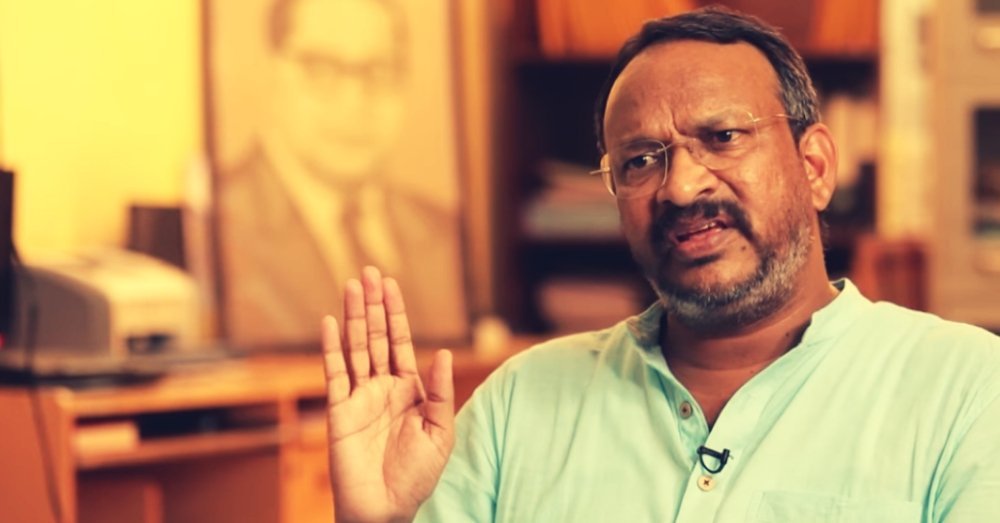





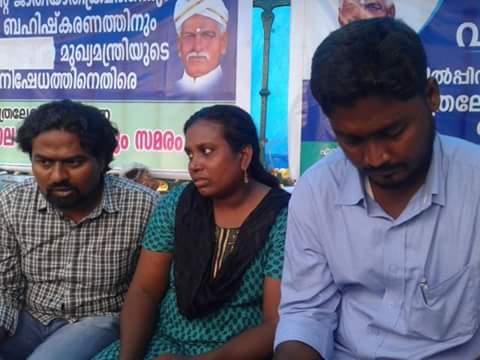
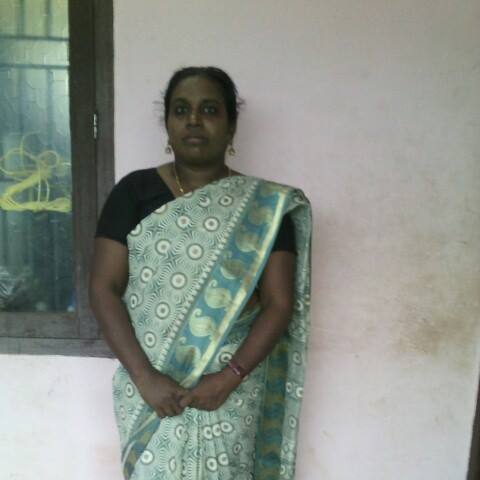


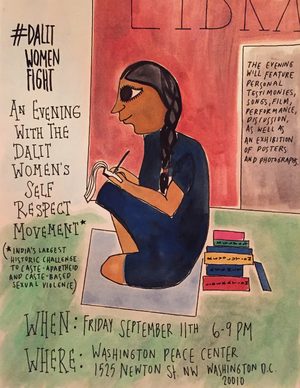

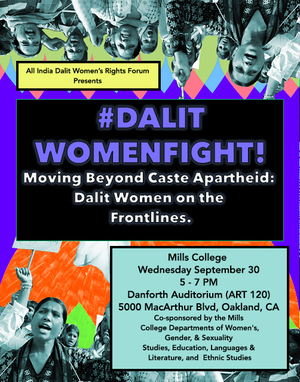
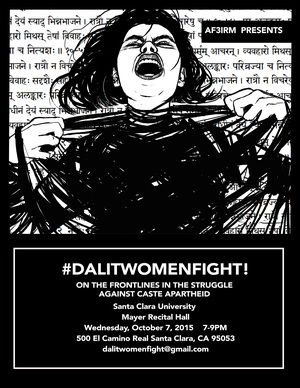
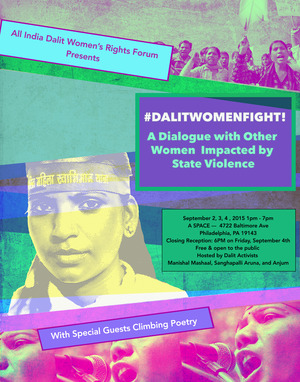


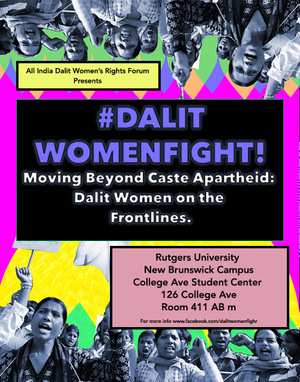
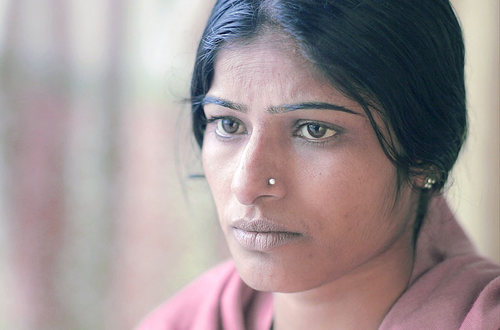


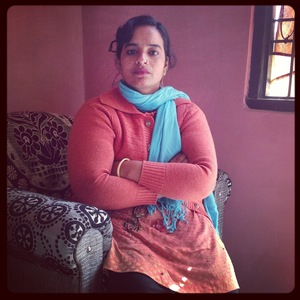
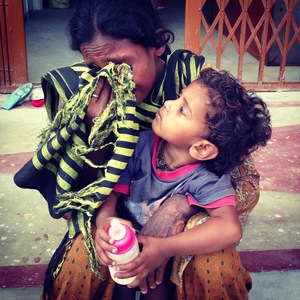
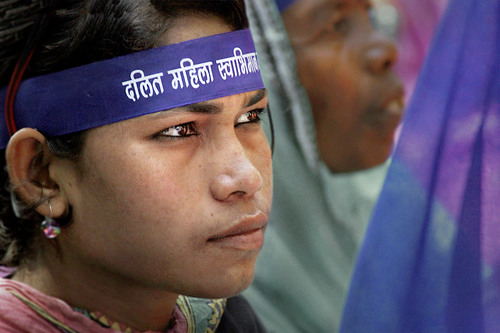

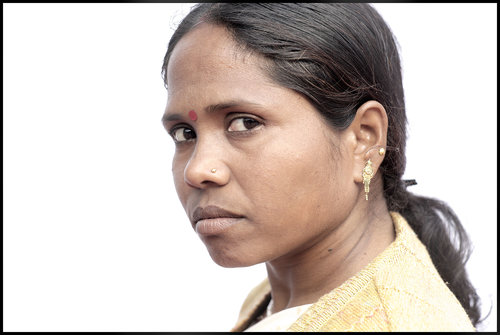
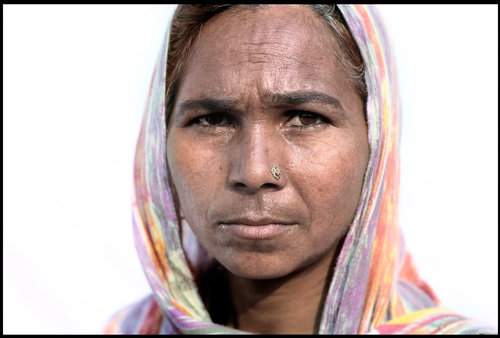

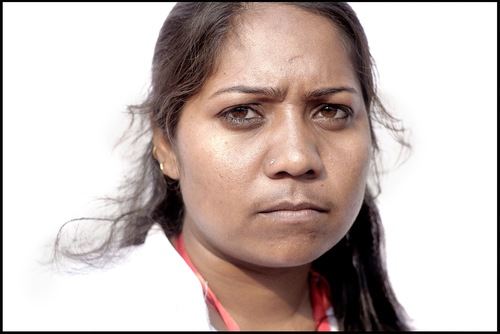
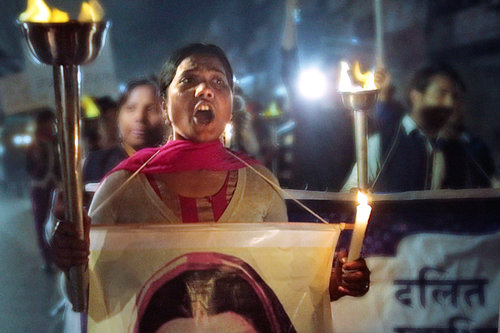
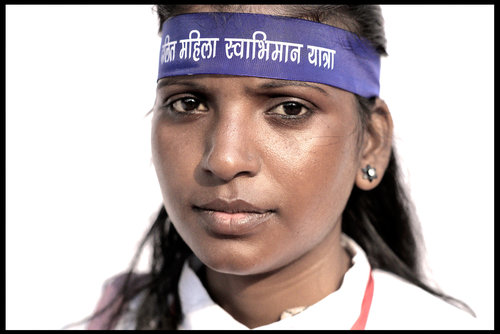

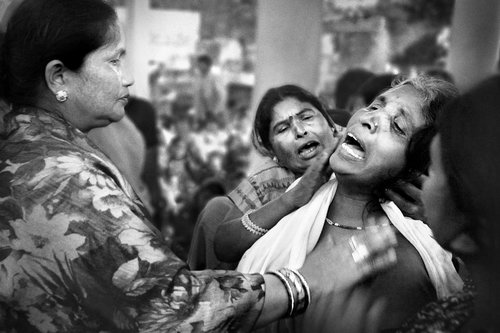
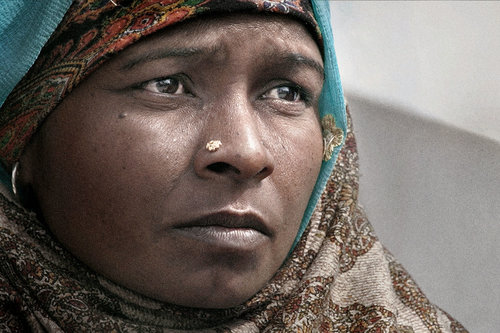


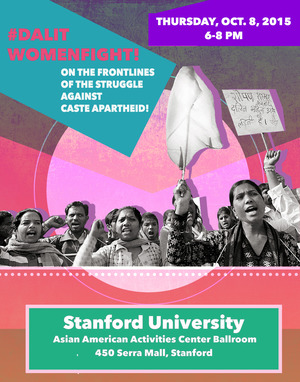
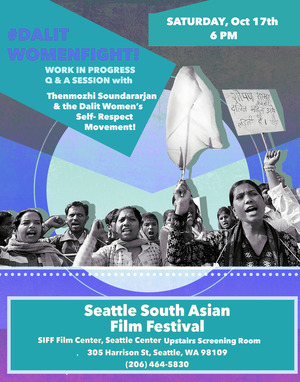
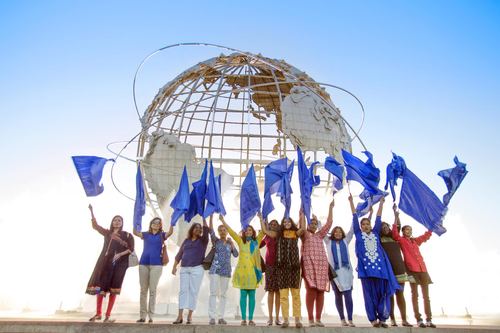
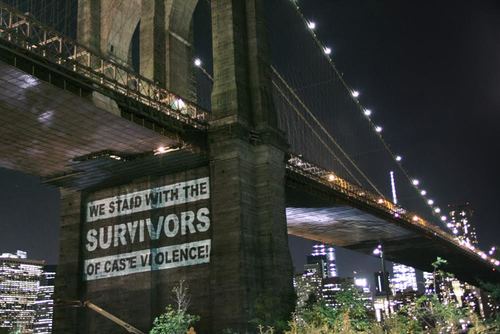
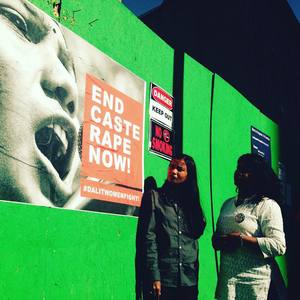



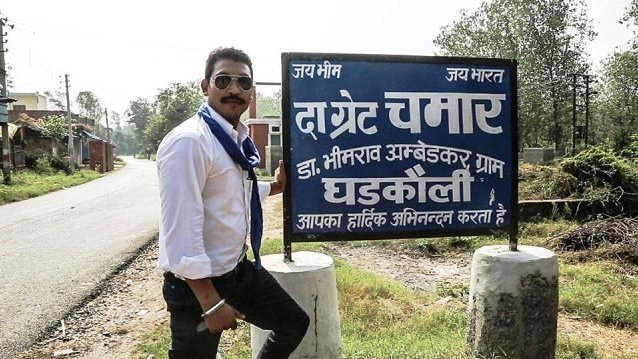
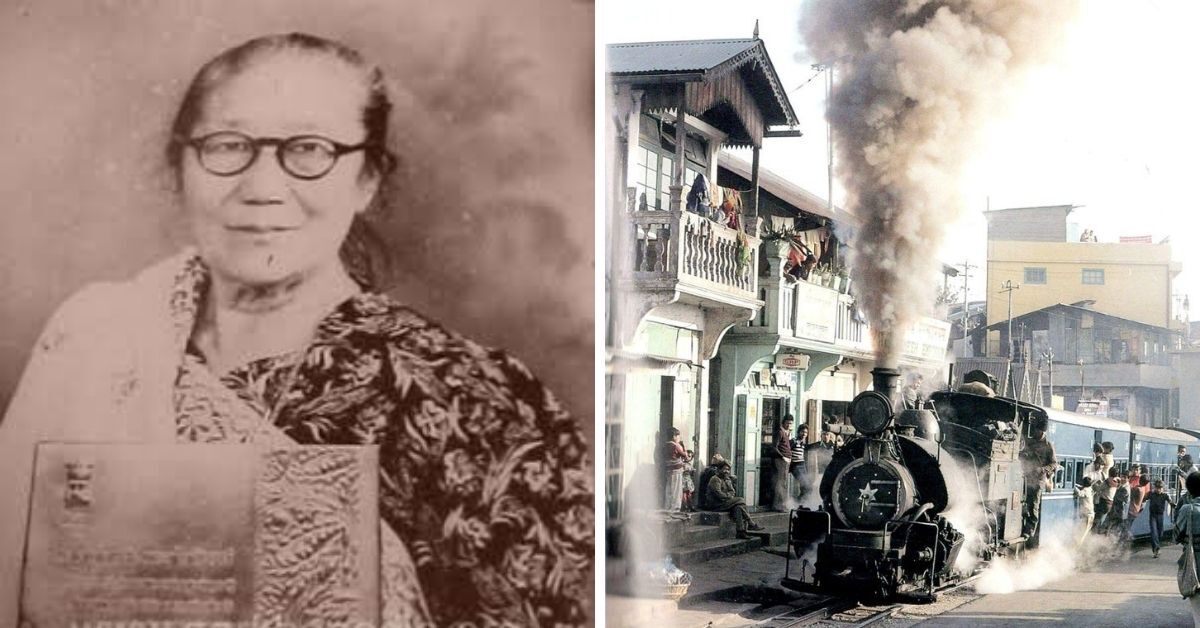



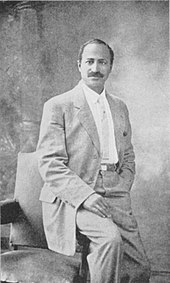

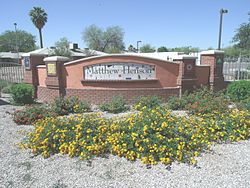



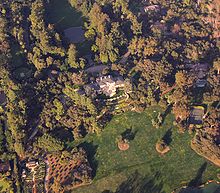
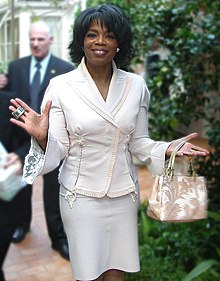




 Pradnya Daya Pawar, a poet, Dalit activist and daughter of Daya Pawar who wrote ‘Baluta’, the first autobiography by a Dalit, in 1978. Photo: Abhijit Bhatlekar/Mint
Pradnya Daya Pawar, a poet, Dalit activist and daughter of Daya Pawar who wrote ‘Baluta’, the first autobiography by a Dalit, in 1978. Photo: Abhijit Bhatlekar/Mint Image Source:
Image Source: 

